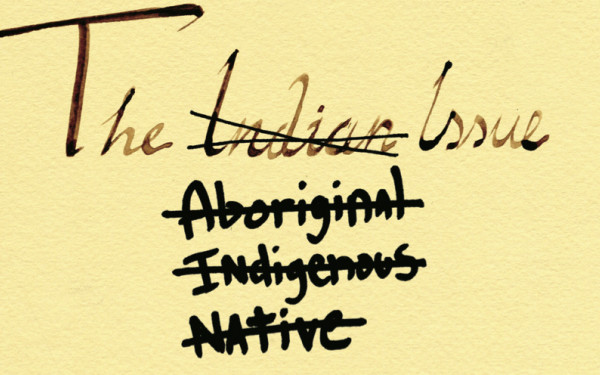Indigenizing University Education Through Art and Experience
Cree Artist Joseph Naytowhow Shares His Knowledge At Concordia
“I was born Cree and I was once free. Then a gust of wind and there a spaceship landed where I once lived. Two aliens came up and pointed a spear at me, and rendered me helpless. Put me in a deep sleep.”
That was the beginning of a story called “Encapsulating my Life” that Joseph Naytowhow delivered at Concordia University during a lecture last Wednesday about Indigenizing university education.
Joseph Naytowhow is a Plains/Woodland Cree artist who came to Concordia from Saskatchewan to pass on knowledge about the traditional Cree way of knowing and seeing through observation and expression.
His knowledge focuses on the hindsight and the insight to discover through experience. Naytowhow explained the importance of vision that forged for him a passage in his life.
The 63 year-old singer, actor, and dancer has found and used his voice through song to represent his people and community.
Although his voice is an important part of his identity, it was a struggle and a journey for him to find it. It was taken away from him by the residential school system he was forced to attend as a child.
“I could only express half of myself after high school,” Naytowhow said.
“I could only express half of myself after high school.” —Naytowhow
It was only when he went to see Mr. Mosquito, a First Nation elder, at the University of Regina that a memory of what he had left 13 years before came back to him.
Naytowhow was introduced back to his culture by the elder; he told Naytowhow that the Cree way of seeing and of knowing was as “vast as a pharmaceutical drug store.”
“Something was gutted out of my body on a physical, mental, emotional and spiritual level,” Naytowhow said, recalling that encounter.
Naytowhow’s story is told with deep visual description and accompanied by song. The narration of it traced back to his culture and language.
He guided his audience through his experiences, going from the self-disgust and self-denial that he felt to an extensive appreciation of his culture.
“I had to go to the valleys, to ceremonies, to therapy. It is a sad story, but it has to be told,” said Naytowhow.
His story was framed by abuse and it took him years to come back to his culture and community; often asking himself, “Can I go back? Can I relearn? Can I return?”
Naytowhow’s role in his community is to tell stories and seek guidance from the other side. Using his rattle and drum—a legacy he holds from his grandfather—he told a compelling story.
With his audience enthralled, he smoothly transferred his knowledge to the people gathered in front of him.
Concordia’s Centre for Interdisciplinary Studies in Society and Culture organized the event. By inviting this engaging speaker, they are attempting to give Indigenous cultures, histories, and languages a new footing in higher education academia.
They want to encourage artists and students to develop interdisciplinary projects in humanities, social sciences and fine arts.

_900_631_90.jpg)
_600_832_s.png)

_600_375_90_s_c1.jpg)
ED1(WEB)_600_375_90_s_c1.jpg)

1_600_375_90_s_c1.jpg)